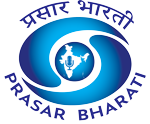Over the years, India’s social welfare framework has improved to reach the most vulnerable sections of society with efficiency and dignity. The National Social Assistance Programme (NSAP), a centrally sponsored scheme of the Ministry of Rural Development, continues to play a key role in this progress. Marking three decades since its launch in 1995, the program now combines traditional welfare support with a modern, digital system that ensures the timely and transparent delivery of benefits to citizens across the country. Speaking about India’s commitment to inclusive welfare, Prime Minister Narendra Modi has often emphasised that “our social security systems must empower citizens, not burden them with procedures.” This vision is reflected in the government’s efforts to strengthen NSAP with technology and accountability.
When NSAP was first introduced, its purpose was clear: to provide financial assistance to individuals and families living below the poverty line who needed support during old age, widowhood, disability, or after the loss of a breadwinner. Initially implemented through manual systems, the process involved physical verification and cash disbursements, resulting in delays and duplication. Over the years, as technology advanced and Direct Benefit Transfer (DBT) mechanisms came into place, NSAP began integrating digital tools to ensure that assistance reached genuine beneficiaries directly bank accounts.
NSAP covers more than 3.09 crore beneficiaries across India through its five components: Indira Gandhi National Old Age Pension Scheme (IGNOAPS), Indira Gandhi National Widow Pension Scheme (IGNWPS), Indira Gandhi National Disability Pension Scheme (IGNDPS), National Family Benefit Scheme (NFBS), and the Annapurna Scheme. Each of these schemes addresses a specific section of vulnerable citizens. Under IGNOAPS, elderly individuals aged 60 years and above receive monthly pensions ranging from Rs. 200 to Rs. 500 from the Central Government, while states are encouraged to add top-up amounts. This has led to an average pension of around Rs 1100 in several states, allowing the elderly to live with dignity.
In 2024-25 alone, the Central Government released Rs 6,843.92 crore under IGNOAPS, Rs 2,150.03 crore under IGNWPS, Rs 243.74 crore under IGNDPS, and Rs 394.19 crore under NFBS, showing the scale of the program’s reach. The widow and disability pension schemes ensure that financial assistance continues for women and persons with disabilities who face social and economic challenges. Similarly, under NFBS, a one-time assistance of Rs 20,000 is provided to families that lose their primary breadwinner, helping them manage immediate financial stress. The Annapurna Scheme complements these measures by offering 10 kg of food grains per month free of cost to senior citizens who are otherwise eligible for pensions but not receiving them.
A major step forward in NSAP’s implementation has been the full digitisation of beneficiary data and the integration of Aadhaar-based authentication. Over 2.5 crore beneficiaries have now linked their Aadhaar with bank accounts, ensuring transparent and secure transfers. This shift to DBT, which now accounts for over 94% of disbursements, has significantly reduced delays, eliminated fake entries, and strengthened trust between citizens and the system. The introduction of the Aadhaar-based Mobile Application for Digital Life Certification (DLC) in July 2025 has further simplified annual life verification for pensioners, allowing them to confirm eligibility digitally instead of visiting offices physically, a move that has especially benefited elderly and disabled citizens.
Earlier, manual verification processes meant that many beneficiaries faced challenges in maintaining their pension eligibility, especially in rural and remote areas. With the DLC app and PFMS (Public Financial Management System) integration, NSAP now enables beneficiaries to verify their identity from home using mobile phones, ensuring continuity of benefits without disruption. The government has also encouraged states and union territories to contribute additional top-up amounts and to ensure that Gram Panchayats and Municipalities remain actively involved in identifying eligible beneficiaries at the local level, keeping the process inclusive and community-driven.
Looking ahead, the government aims to make NSAP a fully responsive digital social protection framework. The current budget allocation of Rs. 9,652 crore for 2025-26 reflects continued investment in social security, particularly for the elderly, widows, persons with disabilities, and families in distress. With the combination of Aadhaar-linked payments, real-time monitoring, and technology-driven verification, the program is moving toward complete transparency and efficiency.
The National Social Assistance Programme thus represents more than just financial aid; it embodies India’s long-term vision of inclusive growth and social justice. By combining compassion with technology, the program is ensuring that no citizen is left behind in accessing basic security and dignity. As India strengthens its social safety net, NSAP stands as a steady pillar of support for millions of citizens, reflecting the country’s commitment to equality, welfare, and digital empowerment.










